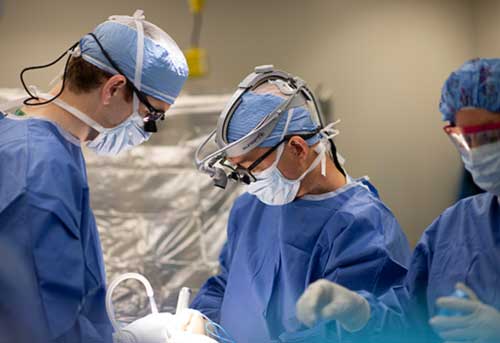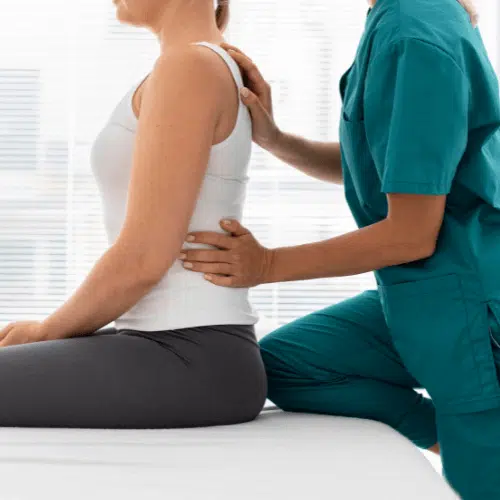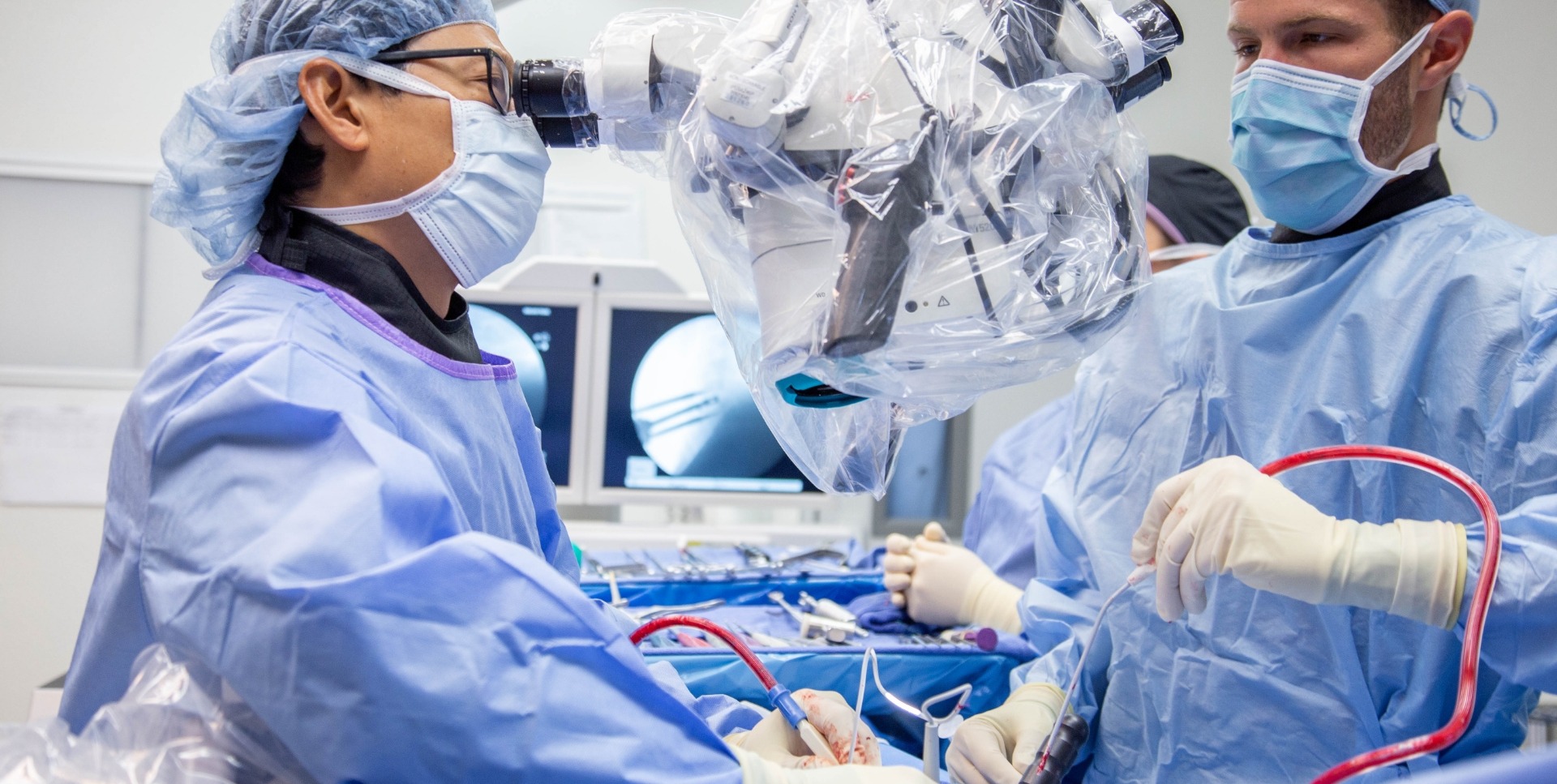Just how to Get ready for Visits to the Best Spine Surgeons in St Louis MO
Just how to Get ready for Visits to the Best Spine Surgeons in St Louis MO
Blog Article
A Review of Spine Problems That Commonly Outcome in Surgical Therapies
When traditional therapies stop working to ease consistent symptoms,Spinal column conditions such as herniated discs, back stenosis, and degenerative disc condition frequently demand surgical treatments. These conditions not just lead to substantial discomfort however can additionally significantly harm daily performance and overall high quality of life. Recognizing the subtleties of each problem and the corresponding surgical choices, such as discectomy or spine combination, is vital for efficient management. As we explore these conditions further, it comes to be evident that the decision-making process surrounding surgical treatment is diverse and warrants cautious factor to consider.
Herniated Discs
Although many individuals with herniated discs may discover alleviation through conventional therapies, surgery ends up being a necessary consideration when symptoms intensify or linger - best spine surgeons in st louis mo. A herniated disc occurs when the soft internal gel of a spinal disc extends through its outer layer, potentially leading and pressing neighboring nerves to pain, numbness, or weak point in the extremities
Conservative monitoring commonly includes physical therapy, discomfort medications, and corticosteroid injections, which intend to lower inflammation and enhance function. In instances where these approaches fail to minimize incapacitating symptoms, surgical alternatives may be discovered.
One of the most common operation for herniated discs is a discectomy, which involves the elimination of the herniated section of the disc to relieve stress on the influenced nerve origin. In a lot more severe cases, spinal blend may be needed to maintain the affected vertebrae.
Patients are encouraged to review the potential risks and benefits of surgical treatment with their health care company to make an educated decision. Ultimately, the objective of any type of surgical treatment is to restore function, reduce discomfort, and improve total top quality of life for individuals experiencing herniated discs.
Spine Constriction
Spine constriction takes place when the rooms within the back narrow, causing raised pressure on the spine and nerves. This condition can develop in various regions of the spine, including the back and cervical areas, frequently because of age-related modifications, such as degenerative disc illness, joint inflammation, or enlarging of tendons.
Individuals with spine constriction may provide with signs that include pain, tingling, prickling, or weak point, mainly in the legs or arms. These signs can be intensified by tasks that entail standing or walking, commonly leading individuals to look for alleviation through traditional therapies like physical therapy, medications, or epidural steroid injections.
However, when these non-surgical treatments stop working to supply ample relief, medical choices may be considered. Usual surgeries for spine constriction consist of laminectomy, which involves the elimination of component of the vertebra to reduce stress, and spinal fusion, which supports the affected area. The decision to seek surgical procedure is commonly based on the seriousness of signs and symptoms, the level of useful about his impairment, and the total wellness of the person. Trigger medical diagnosis and monitoring are critical to stop more neurological concession and boost lifestyle.
Spondylolisthesis
Spondylolisthesis occurs when one vertebra slips forward over another, resulting in misalignment of the back. This problem can arise from different aspects, including congenital issues, injury, or degenerative modifications in the back. It is find out here most generally observed in the back area, particularly at the L4-L5 and L5-S1 levels.

Treatment alternatives differ based upon the severity of the slippage and the symptoms offered. Conventional procedures, consisting of physical therapy, discomfort management, and task adjustment, are frequently the very first line of defense. Nevertheless, when non-surgical strategies stop working to ease signs and symptoms or when significant nerve compression exists, surgical intervention may be warranted. Surgical options can include spinal fusion or decompression treatments, targeted at recovering positioning and minimizing neurological signs and symptoms. Early medical diagnosis and suitable administration are crucial for optimum results in individuals with spondylolisthesis.
Degenerative Disc Disease

The problem can be detected through a mix of scientific evaluation, imaging researches, and patient background. When these approaches stop working to offer adequate relief, surgical treatments may be thought about.
Surgical choices for DDD may consist of spinal blend or fabricated disc replacement, targeted at stabilizing the affected section and easing discomfort (best spine surgeons in st louis mo). Ultimately, the choice of treatment is individualized, considering the intensity of the condition, patient health and wellness, and way of living elements
Spinal Lumps

Back lumps can emerge from different aspects, including genetic tendency, ecological influences, and pre-existing medical conditions. People might offer with an array of signs, including localized discomfort, neurological deficits, weak point, or changes in digestive tract and bladder feature, depending on the growth's size and area.
Surgical treatment may be required to minimize signs, obtain a biopsy, or eliminate the tumor totally. The goal of surgery is often to decompress neural elements and maintain the spinal column. Early detection and intervention are critical for enhancing end results in clients with spine growths.
Final Thought
In recap, back problems such as herniated discs, spine constriction, spondylolisthesis, degenerative disc disease, and spinal lumps regularly necessitate surgical intervention due to their possible to cause significant pain and functional disability. While traditional treatments might use short-term alleviation, medical alternatives end up being crucial when symptoms aggravate or persist. Prompt diagnosis and intervention play a crucial role in bring back function and enhancing the lifestyle for affected people, underscoring the significance of extensive back treatment.

Report this page